Bike commuting: The best way to take your biking to the next level
In early March, when it became clear that Coloradans would largely be staying at home due to the COVID-19 crisis, we here at Bicycle Colorado encouraged Coloradans to use their bicycles as a way of getting exercise and to spend some time outside. We’ve been heartened to see more people getting out and riding to take care of themselves.
Now that Colorado is starting to move toward easing some social distancing requirements, we’re here to help you take your bike riding to the next level. As many Coloradans who’ve been teleworking begin heading back to work and school in person, we wanted to provide you with this toolkit on riding for transportation and everyday trips, like your commute to your workplace, to the bank, the grocery store and more.
We also want to acknowledge the many essential workers who have already been biking to work and to make deliveries during the last few weeks. Thank you!
Jump to:
Why bike?
Bicycling is an efficient, healthy and environmentally-friendly way of getting around. Driving a motor vehicle contributes to air pollution and while we’ve seen improvements in air quality around the world as fewer people are driving, things could swing back the other way once folks return to more normal life. In Colorado, air quality along the Front Range and especially in Denver is notoriously poor. Denverite recently explored how people continuing to telework can help keep air pollution levels lower. While we know not everybody can work from home, people drive for other everyday trips too, like going to a restaurant or the gym. Shifting to biking to work and other places can help you get to where you need to go—without contributing to bad air.
Not everybody can travel by bike due to health reasons, a disability or because their destinations are just too far, but many of us can. According to data from the 2017 National Household Travel Survey (NHTS), 67% of all trips three miles or fewer are in a privately owned vehicle. That means ⅔ of trips that could amount to a short bike ride are taken in a car instead. For most folks, a three-mile bike ride would be 15-30 minutes. Next time you’re thinking about driving for a short trip, especially one three miles or less, we hope you’ll consider switching to riding your bike!
Bike commuting has some perks that driving can’t beat. We’ve talked about bicycling’s relationship to physical and mental health and the environment in previous articles, but here are some more benefits:
- It is way easier to park a bicycle than it is a car in urban centers, and it’s free! Say goodbye to circling the block over and over again for an open car parking spot. If you can’t find a bike rack nearby, ask if you can bring your bike into your office or the building you’re visiting.
- The CDC and the American Heart Association recommend that adults get at least 30 minutes of moderate physical activity per day. Bicycling raises your heart rate and increases your breathing, and anyone who’s ridden a bike for 15 minutes knows it can be decent exercise. Take a 15-minute ride twice a day to and from work or an everyday trip and you’ve met that exercise goal!
- Many people participate in activities like yoga or spin class or go out and ride their bike to clear their mind and take a break. Why not ride to and from work to do the same? You can come into work energized and head home pedaling away work thoughts.
- The cost-savings of owning and operating a bike compared to a car are significant. A simple bicycle is much cheaper to purchase than a car, you aren’t going to have to pay for gas or more expensive maintenance, and you can bundle exercise and efficient transportation in one. (To underscore this point: in Colorado in 2015, the average amount spent by consumers on bikes and repairs was $217. Compare that to the AAA’s report on the average cost of car ownership in the U.S. and the cost difference becomes clear!)
What if we used our bikes not just for fun, but for transportation, too? What if we got up just fifteen minutes earlier, and gave ourselves fifteen minutes at the end of our day to commute home? Or we tried biking to the pharmacy or the gym a couple of miles away instead of driving there? Pull up a map and really look at how many miles away some of your everyday spots are. If there’s a destination one to three miles out, you’ve got a great candidate for a place to bike to instead of drive. Here are some ideas:

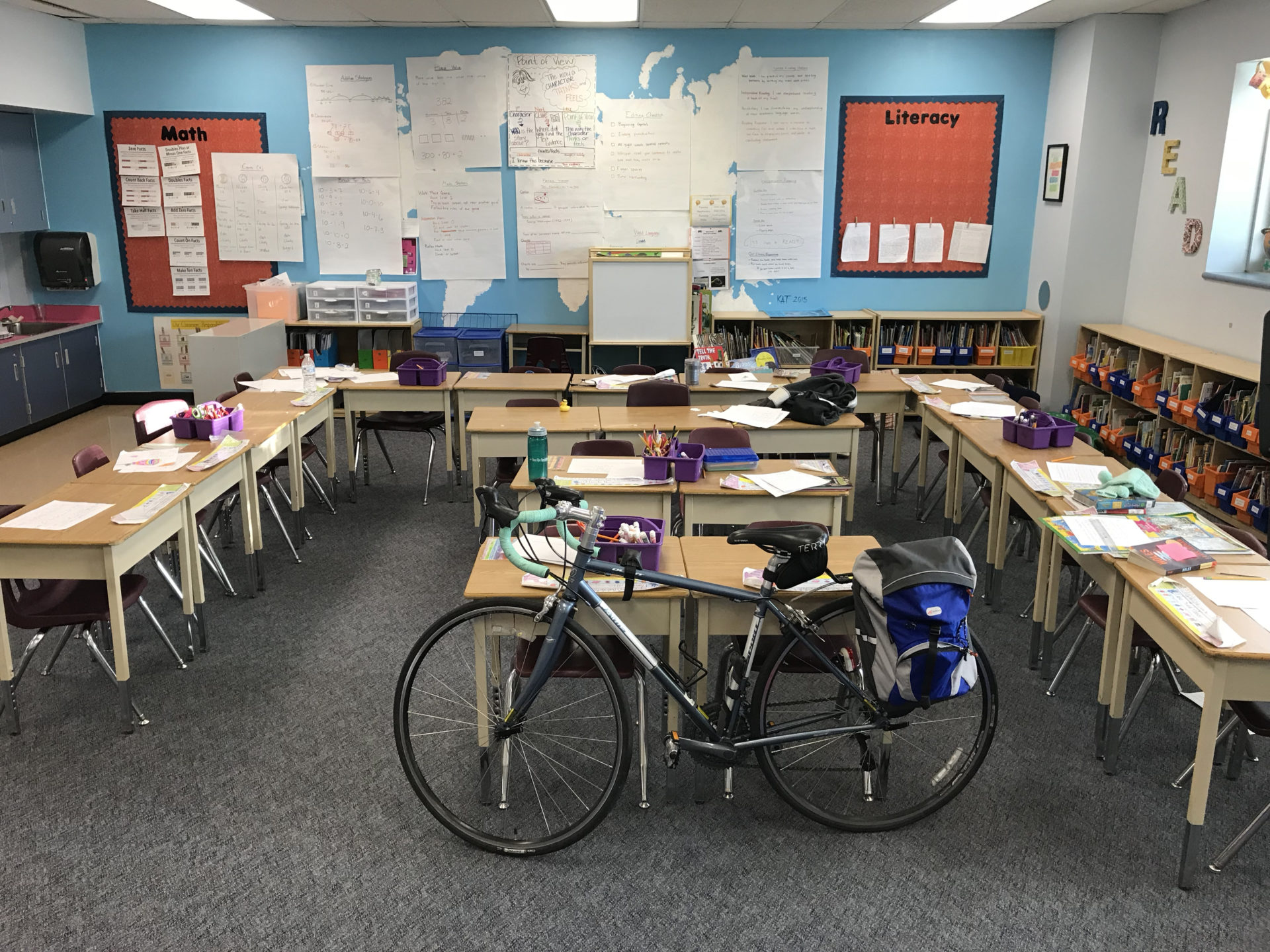
- The office
- The grocery store
- The pharmacy
- The convenience store
- The library
- The bank
- The gym
- The park
- Friend’s houses
Got a place in mind? Let us know by submitting a comment below!
Next, let’s talk about how you’re going to do this.
How to start bike commuting
We’ve got some tried-and-tested tips for you that’ll make your bike commute more comfortable. Just like you might have your routine down for hopping in a car to get somewhere, you are learning new strategies for biking as transportation. We’re excited for you to join the club!
Prep your bike
It doesn’t have to be flashy. There are a few basic accessories that’ll make your bike a versatile transportation machine. You should be able to find any of these at your local bike shop or online. The bike shop folks can help you attach them or you can look up demonstration videos:
- Lights: these are useful whether or not you ride at night. It helps other road and path users notice you and can help illuminate your path in the dark. You’ll want a white front light and we encourage a red rear light as well. Remember: In Colorado you are required to ride with a front light and a red rear reflector starting at dusk or when visibility is poor.
- Bell: or, use your voice. This is for indicating to other bicyclists or pedestrians that you are approaching if you need to pass them.
- Lock: U-Locks are the most secure kind of lock; you can attach your front wheel and your frame to the bike rack or post. For added security, you can get a cable or chain lock to thread through your back wheel, too. If you’d like to advocate for more bike parking at your office, let us know by emailing piep@bicyclecolorado.org.
- Fenders: These are extremely useful if you plan to ride in all weather, or in case you’re caught in rain! Fenders can help keep you and your bike clean if there’s any water or snow on the ground.
- Rack/basket/panniers: These are all different ways to add storage space to your bike. Usually, a basket or panniers are mounted onto a rear rack that sits above your back wheel, and you can mount a front rack and bags to some bikes as well. If you’re planning to use your bike for grocery runs, a library trip or anywhere else you might be carrying things, this is a great addition! If you really want to carry a big grocery load, or take your pet or child along for the ride, you can add on a trailer, too. Of course, if none of these additions appeal to you, a backpack is always a good alternative for carrying items.
Prep your route
Finding a route that works for you can feel daunting. Looking at maps, asking friends, and just riding around and observing are all ways to figure out how you’ll get from Point A to Point B.
- We’ve got a number of bike maps and resources listed on our website for you to use to make your route-finding easier. If you notice that we’re missing anything, please let us know! Google Maps has a “Bicycling” layer; search directions to a place and select the bicycle icon to see Google’s recommended bike route. You can also google “bike maps” in your city or region and see what comes up. If you’re in Denver, in addition to the City and County’s bike maps, you can use Bicycle Colorado’s Active Bike Corridor routes and BIKE STREETS.
- Do you have friends who are already bike commuters? Ask them what streets or paths they would suggest or ride the route with them. For Denverites, Bicycle Colorado’s Neighborhood Navigators program can connect you with an experienced bicyclist and commuter to help you get comfortable with your route to work. Reach out to the local bicycle organization in your community to see if they can help!
- Ride the streets nearby your home and observe things like the bike infrastructure (bike lanes), the speed limit on the road, and the number of cars on the road and experiment with different route options. Remember that the quick and direct route you would take in a car may not be the most direct or safest on a bike.
Practice your route on a quiet day so you can get a feel for it. We suggest earlier on weekend mornings.
Allow room for trial and error. You might find that the route you chose is too steep for your liking, or it isn’t as direct as another route you discover later. You might inadvertently get too many groceries for your basket to handle. You might forget deodorant one day. All of these things are okay. You’re learning a new-to-you way of getting around!
Prep yourself
Learn some basic bike maintenance; local bike shops often teach classes and you can also find plenty of great videos online. You can find some tips from our education team by clicking on the videos below or visiting our Vimeo page! Knowing how to change a flat, fix a dropped chain, how much air your tire needs and keeping your chain clean and lubricated can help your bike last longer between mechanic visits and keep it running smoothly. Know where your closest bike shops are in case you do need to go in for a fix or a tune-up!
Bike in whatever clothing YOU feel comfortable in, whether that’s your work clothes or something you plan to get a little sweaty in. Pack deodorant, wet wipes or a change of clothes if you want to freshen up once you arrive to work.
Dress in layers so that you can remove or add layers as needed. If you stand still outside and you feel a little chilly, you’re dressed correctly for a bike ride—you’ll warm up quickly!
If you are wearing a helmet, make sure it’s fitted correctly on your head.
Finally, enjoy the ride! Riding your bike for transportation is a great way to get around, take care of yourself and see your community in new ways.
Bike commuting myths
If you’ve been hesitant about using your bike as transportation, we’re here to bust some myths and show you that it can be an accessible and convenient way for many to commute and make everyday trips.
Myth 1: I’ll be gross and sweaty all day.
Depending on your route and pace, you may work up a sweat, but who said you’ll have to feel uncomfortable the rest of the day? A change of clothes, wet wipes and deodorant will go a long way in keeping you feeling fresh. And avoiding a hill or riding at a slower pace will help prevent you from getting sweaty in the first place.
Myth 2: I have to bike fast like all of the other people I see riding around.
You can ride at a pace that works for you. It’s not a competition (unless you’re actually racing). Start early and take your time. Enjoy the fresh air, sights and sounds along the way.
Myth 3: Bike commuting is only for young people.
Bicycling is an aerobic, low-impact exercise that is excellent for older adults, too! It is relatively easy on the joints and still helps you keep your body moving and maintain a strong sense of balance. Bike commuting is for all ages. Even if you aren’t commuting to work, there might still be a place you go to regularly that’s nearby that you could get to on a bike.
Myth 4: I can’t ride when it’s wet or cold out.
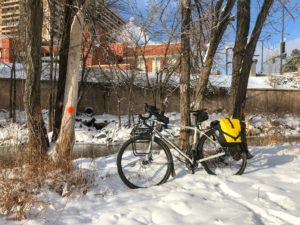
Riding in rain or cold weather is all about preparation. Here are some examples of gear that will help you conquer the elements:
- Bright lights
- Fenders
- Warm socks
- A raincoat or winter jacket
- Balaclava or neck gaiter
- Ski cap to wear under your helmet
- Warm gloves or mittens
- Studded tires for snow
You can also modify how you ride in the winter, for example, slow down or avoid braking or turning quickly through icy or snowy patches. If you don’t want to ride in cold weather, rain or snow, that’s okay, too!
For business owners
In the face of the COVID-19 crisis, many employers found ways to be flexible and reconfigure work so that employees could complete their tasks from home. As some of us slowly begin returning to our offices, Bicycle Colorado also encourages businesses and business owners to think about how YOU can support your employees who choose to bike to work. The financial and social benefits are well worth it. We’ll have more information on the benefits you might expect in our next article on this topic.

Now, when every aspect of our lives has turned topsy turvy, is the time for us to reassess our relationship to the world and how we get around it. We have the chance to make a major shift in how we travel by reducing car trips, and the bicycle is the best tool to do it.
Fewer cars on the road means improved air quality, fewer people and communities at risk of widespread breathing problems or being injured or killed in a car crash, more people getting exercise, and becoming more familiar with our neighborhoods and communities. All from hopping on our bikes to make an everyday trip!
Your membership makes resources like this possible.
Leave A COMMENT
Our twitter feed is unavailable right now.
The Latest News
view all- Jun 13, 2024
- by Bicycle Colorado
Discover Denver With Denver Century Ride
- Bicycling in Colorado,
- Denver,
- Event Member Spotlight,
- Events
- No Comments





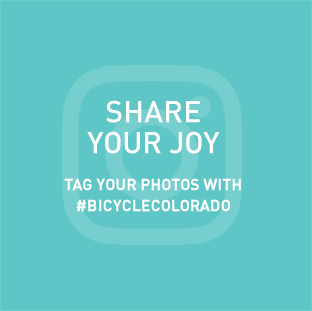

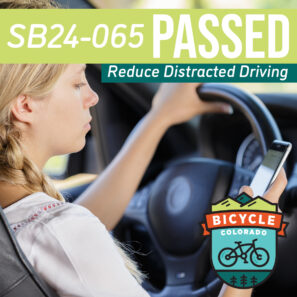
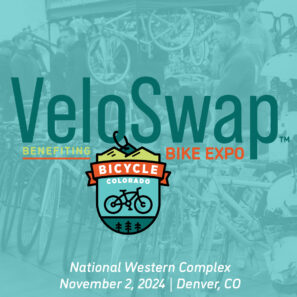
COMMENTS (3)